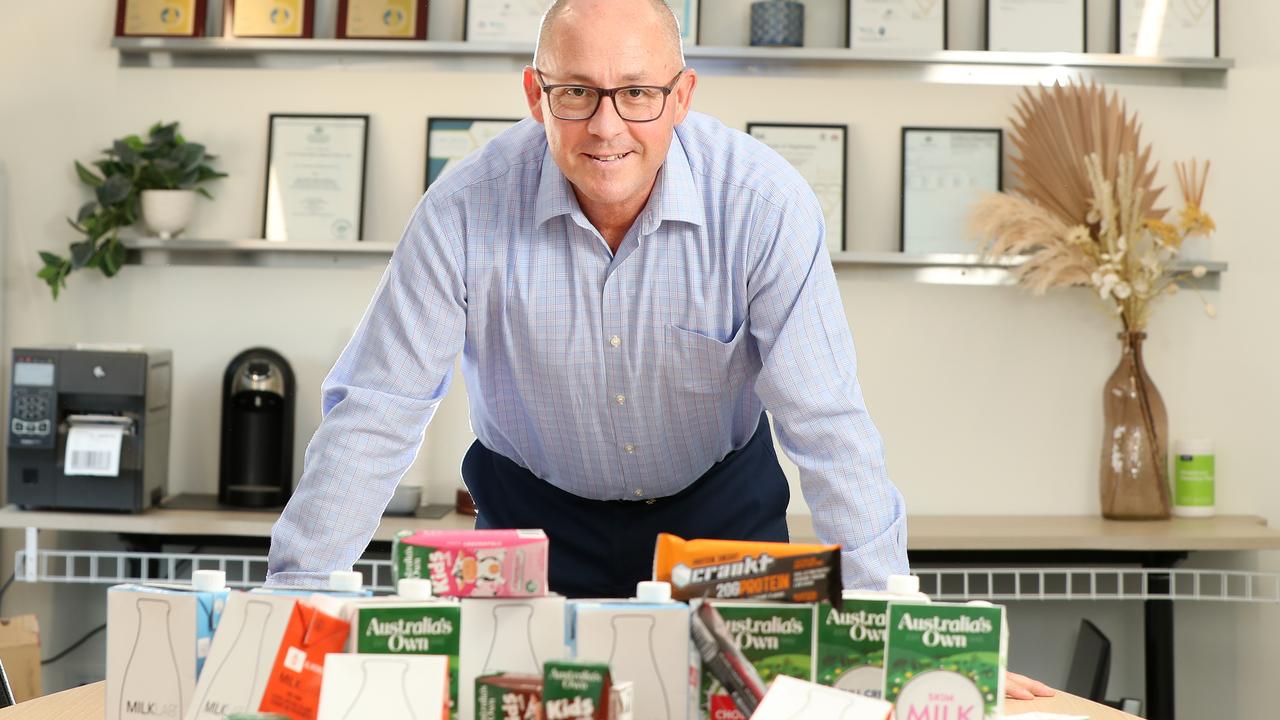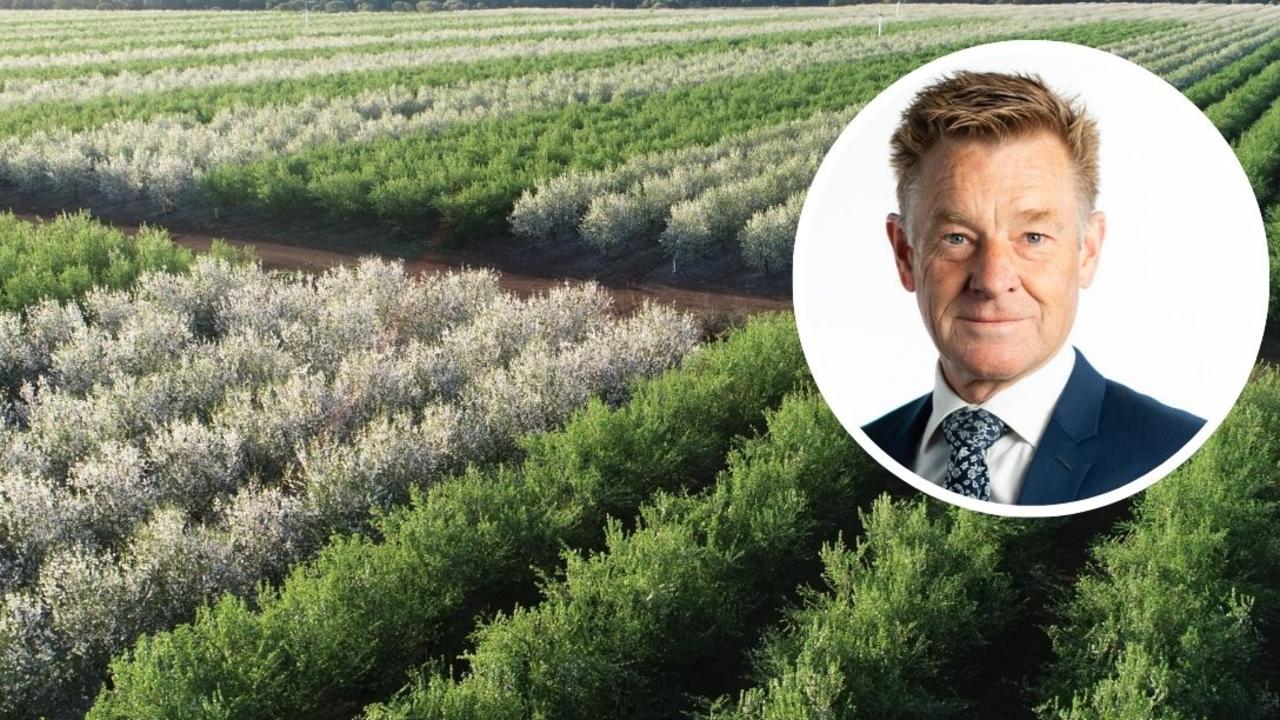Harvest Road: How Twiggy Forrest built a $700m agriculture empire
The Forrest family business is Western Australia’s biggest beef producer and processor, and that’s just the start of its ag ambition.
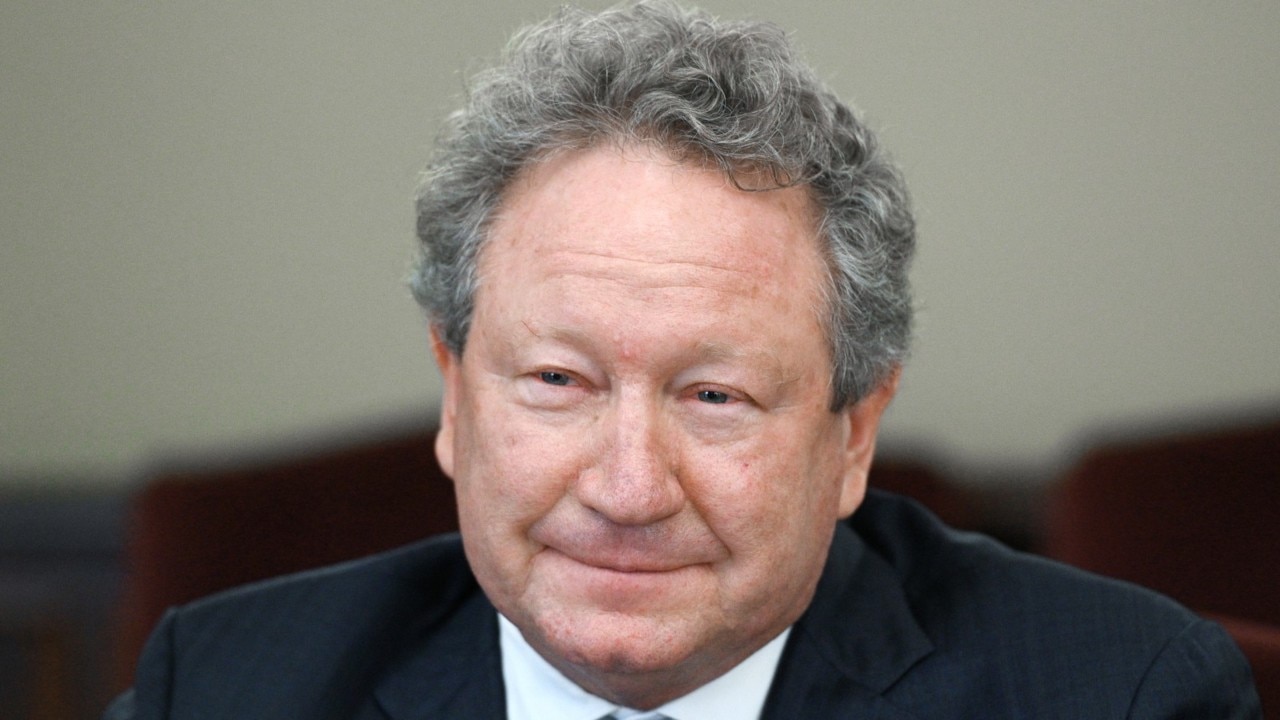
Hanging from the rocking boat’s stern, Harvest Road’s aquaculture head Justin Welsh carefully snags the seaweed-encrusted black ropes that hang deep off Albany’s sheltered Mistaken Island.

As Justin winches in the heavy lines, hundreds of small translucent shells clustered on the looping ropes emerge from the aqua-blue sea. A knife is quickly produced, the delicate shell opened and the luminous white flesh inside instantly eaten, straight from the salty seas of King George Sound.
This is akoya, the new seafood sensation being pioneered, farmed and championed by mining billionaires Andrew and Nicola Forrest, part of their rapidly expanding West Australian food and agricultural empire, Harvest Road.
“Just don’t call them oysters,” laughs Canadian-born Justin, of the tiny scallop-shaped akoya found naturally across the Indian Ocean and farmed in Japan for Mikimoto cultured pearl production rather than its meat.
“It’s not an oyster, you don’t farm it like an oyster and it doesn’t taste like an oyster. We have a vision that akoya can be a unique new seafood for the world; we are quickly scaling up production to 18 million akoya by 2025 and have just launched it commercially to chefs and restaurants in Perth, Sydney and Melbourne.
“It is so sustainable to grow, its provenance is so firmly anchored here in Albany and WA and we have just achieved carbon neutrality – it fits perfectly with the Harvest Road philosophy of farming and food.”
The integrated Harvest Road business was formally started in May 2020. It is the agrifood division of the famous Forrest family’s private business arm, Tattarang.

But the business had its roots back in 2009, when Andrew Forrest – publicly known always as “Twiggy” – bought remote Minderoo cattle station in the western Pilbara, originally established by his great-grandfather David Forrest in 1878.
It was a heartstring purchase for $12 million, using early profits from his then-risky new mining venture, the Fortescue Metals Group. (Fortescue is now the world’s fourth-biggest iron ore producer.)
Minderoo, with its sprawling 240,000 hectares along the banks of the Ashburton River near Onslow, is where Forrest grew up as a child and worked as a jackaroo in his youth, before his father was forced to sell the property in 1998 due to relentless drought and mounting debt.
Those tough days are well in the past. Minderoo Station is now firmly back in the family fold and Twiggy, 60, has become one of Australia’s most wealthy elite. His personal fortune is estimated at $27 billion.

He remains a 36 per cent shareholder in ASX-listed $51 billion Fortescue Metals, with his slice of the company’s $8-$10 billion annual profits put back into the Forrest family’s twin private interests, their commercial Tattarang group and philanthropic Minderoo Foundation.
It’s an extraordinary wealth and vast income stream that has allowed Twiggy and his country-born wife, Nicola, to invest heavily in the industry closest to both their hearts and heritages. Harvest Road is now one of Australia’s biggest and most diverse agricultural and food companies, with a core focus on sustainable high quality beef and seafood.
Tattarang chief executive Andrew Hagger, who oversees the Forrests’ private investment house with its $30 billion of assets, says Harvest Road is a “rapid growth story” now achieving significant scale.
Annual sales of Harvest Road products – premium Harvey beef, Leeuwin Coast branded rock oysters and akoya and Ernest Green pies, sausages and manufactured meat products – exceed $700 million. Revenue growth, largely funded from Forrest family income outside Harvest Road, is growing at a staggering 30 per cent a year.
“We say we’re the smallest we’ll ever be,” Hagger says, laughing. “We have broad interests and appetite in food and agri and it’s deepening every year.”
After a spending spree of more than $170 million in the past two years, Harvest Road now owns three million hectares of land and dozens of cattle stations and pastoral leases, mainly across the Pilbara and Kimberley in WA’s north.
It is now the biggest beef producer, processor and exporter in the state, the largest oyster grower, the only akoya farmer, and the only company licensed to grow and farm native red seaweed or asparagopsis, used as a feed additive to reduce damaging methane emissions from livestock.
Plans to build a $100 million kingfish farm on coastal land near Bunbury are close to finalisation, while trials of seaweed farming in onshore tanks at Jurien Bay are underway. New expansion into alcoholic beverages, especially tequila, is nascent with blue agave in the ground, while mango and sweet potato crops at Carnarvon are now productive.
As well, Tattarang has been busy in agricultural and food investment. In late 2020 it grabbed iconic bootmaker RM Williams back from the brink of becoming a foreign fashion house plaything, outlaying $190 million.
It has also just emerged with a significant 18 per cent stake valued at $210 million in Australia’s oldest company, biggest cattle owner and vast landholder, the ASX-listed Australian Agricultural Company.

Nicola believes AACo has been undervalued for a long time, considering it owns some of the best cattle country in Australia, and has not flourished since overseas interests (Bahamas-based millionaire Joe Lewis and his Tavistock company) had control of the board.
“We are committed to investing in iconic Australian companies; it is not about us owning it because we believe AACo belongs to the whole country,” Nicola says.
She says it is now up to the AACo board whether Tattarang’s major investment leads to a director’s seat.
“But we think it is important that good decision-makers sit at that table and that Australians are there.”
Tattarang has also bought a 10 per cent stake in Bega Cheese for $150 million. It makes the Forrest family the single biggest shareholder in the homegrown Aussie dairy and food company that now owns Vegemite, but is seen as vulnerable to a foreign takeover.
And, very publicly, in mid-last year Tattarang emerged as a bidder for Tasmania’s second-largest salmon producer, Huon Aquaculture, spending $65 million to snare a 18.5 per cent fillet of Huon, despite the salmon industry being under intense public pressure and scrutiny for its “toxic” environmental impact.
Twiggy, who has a PhD in marine science and a passion for the world’s oceans, said last year he was keen to push Huon and ultimately its new owners, Brazil’s JBS, to become a more sustainable and ethically “better” company.

“If you’re a consumer of animal protein, like most of us are, then (you have a right to be) assured that the protein on your plate has come from an animal that did not suffer,” he said last year.
WA’s biggest beef business has also dived headlong into the booming world of plant proteins and vegetarian food. Last year it bought a 12 per cent share of Sydney plant-based ProForm Foods and its branded “Meet” products.
“There will always be a demand for high-quality food, and we believe plant protein is part, but not all, of that story,” says Nicola, who is co-chair and co-owner of both Tattarang and Harvest Road. “But having grown up on farms, we also think there is nothing wrong with eating meat.”
The Forrests say they want their wealth and their businesses to play a role in creating more jobs for Australians, bringing assets back into local hands from foreign ownership and changing the world for the better.
There is also a lofty ambition to be a “shining light” to other farmers, companies and industries; to encourage new ways of farming or doing business sustainably, renewably and ethically, in the hope others will see the positive outcomes of these innovations and follow suit.
“It’s all very much driven by the fact Andrew Forrest has always been a big thinker,” says Nicola of her husband and co-chair. “So (all) these new ideas, the big thinking behind them; our philosophy is that’s what we aim for and push ourselves towards; we call them stretch targets.
“The luxury of having the dividends of Fortescue means we can really think about what we want to invest in for the future of Australia, and how we do it.”
BRICKHOUSE STATION
Mobs of sleek black and red young cattle are grazing the long grass lining both banks of the wide, sandy Gascoyne River inland from the WA town of Carnarvon.
Only the dead paddock trees are a leftover sign of the three-year drought that saw Harvest Road’s 250,000-hectare Brickhouse Station completely destocked until early last year.
Young Brickhouse Station managers Tash and Aaron Land find it hard to believe the change they have seen in the country in the past 18 months, after bountiful rain refilled dams, replenished essential groundwater and sent the mighty Gascoyne River into full flood, lapping at the front steps of Brickhouse’s homestead.
“It’s great country but it’s so variable; last year we had 480mm of rain and in the drought it was less than 100mm,” says Tash, who, together with Aaron has worked for the Forrest family since it bought Brickhouse Station in 2016.
“But the destocking gave us time to work out our plans – all about more wire and more poly pipe – so we had more paddocks, more fencing, more watering points and more buffel grass and were much more productive by the time the drought broke.”
Brickhouse Station now plays an important role in Harvest Road’s integrated, paddock-to-plate beef supply chain.

In the company’s rapidly growing stable of northern WA pastoral properties, Brickhouse is a link to the consumers and markets of southern WA, where Harvest Road has built a 20,000-head intensive feedlot at Koojan Downs north of Perth and owns the large meatworks at Harvey.
In good years, 4000-5000 young weaner steers and heifers that have been bred and born on Harvest Road’s outback Pilbara and Kimberley breeding properties, including Minderoo, will be trucked to Brickhouse in May each weighing about 200kg.
The young cattle will put on 1kg a day of weight on Brickhouse’s paddocks, before being transported south six months later for entry into the new Harvest Road feedlot near Moora. “My job here is to put kilograms on young cattle; to keep them moving down the (company) supply chain to Hill River (near Geraldton) and then Koojan Downs,” Aaron says modestly.
“If there is no rain, they will be sent south quicker because we don’t want to flog this country. Animal welfare is another top priority; not just because you’ve always got to look after your stock as best you can, but because the consumer at the other end gets the benefit as well.”
Harvest Road chief executive Paul Slaughter says creating a fully integrated premium quality beef supply chain has been the central focus of the Forrest family’s agricultural business ever since it bought the Harvey Beef abattoir in 2014 for $40 million.
It is the largest export-accredited meat processor in WA, with an existing capacity to process 200,000 cattle a year. Improvements to make the “one bad day” in each animal’s life as stress-free as possible have been added.
But, until recently, Harvest Road has had to acquire 95 per cent of its cattle from other producers to supply Harvey Beef’s processing needs, buying an astounding half of all available young cattle in WA every year that were not exported live to Indonesia.
“Until we built our cattle supply chain, by adding more properties with a diversified geographical spread, developing and improving them and reducing our risk (to drought), we really couldn’t build a breeding herd of sufficient size to rely on,” Paul explains.
“But if we want to ensure the consistency and quality of our beef, and be able to guarantee other core principles such as animal welfare standards, environmental sustainability and carbon neutrality to our consumers, we need to be supplying at least 30-40 per cent of our cattle requirements into the (Harvest Road) supply chain. That’s our aspiration.”
In the past two years, Harvest Road has bought Jubilee Downs in the Kimberley’s stunning Fitzroy Valley for $30 million, and Balfour Downs in the East Pilbara for $32 million, while the four stations in the Springvale aggregation in the East Kimberley were snapped up in March for a hefty $70 million.
All properties were bought from foreign hands – a favoured refrain in Forrest-land – owned previously by American, Chinese and South African interests.
Nicola, who is closely involved in all cattle decisions, says there has been an equally intensive priority on improving the genetics and size of the company’s northern herd of breeding cows, increasing to 50,000-70,000 head.
“We have invested heavily in Wagyu bulls over Ultrablack progeny, while keeping our own Minderoo Red too,” Nicola says.
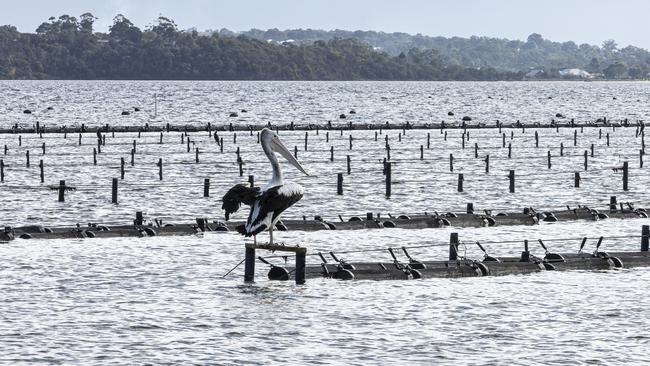
But the biggest step in completing Harvest Road’s integrated supply chain has been the recent opening of its new $70 million Koojan Downs feedlot two hours’ drive north of Perth.
Covering 60 hectares it will take in 20,000 cattle weighing about 420kg each – about a third coming from Brickhouse Station and other company farms and the rest having been bred elsewhere – and fatten them on grain rations to a finished liveweight of 630kg in four months.
Three intakes of young cattle a year are planned.
Harvest Road pastoral manager Ben Dwyer predicts that if the company get its Koojan feedlot right, it will be the catalyst for enormous change in the wider WA cattle industry.
“I’ve got producers of large herds ringing me now, wanting to know how they might fit in with what we are doing here,” Dwyer says.
Nicola admits there was a great deal of soul-searching about adding a cattle feedlot within the Harvest Road beef supply chain. She wondered if 20,000 cattle could be housed relatively intensively for 125 days and still be treated humanely.
It was only after world-renowned animal behavioralist Dr Temple Grandin agreed to advise and help design the Koojan Downs facility to the highest standards of animal welfare that the Forrests committed to the intensive feeding concept.
(OCEAN) PADDOCK TO PLATE
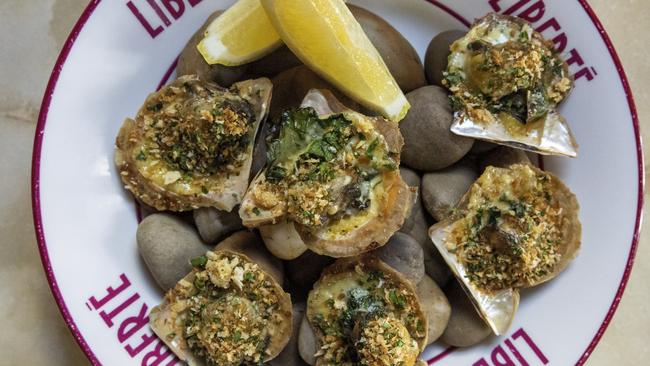
Executive chef Kim Brennan emerges from his fine dining kitchen at Perth’s Post restaurant, carrying a large china plate on which six fragile shells glow like luminous jewels.
Inside is cradled the soft white akoya flesh, served as a ceviche marinated with lime and ginger. They were harvested just a day earlier from Harvest Road’s marine leases in Albany’s King George Sound.
Brennan excitedly describes the new taste as like nothing before. “It’s really exciting to have a new seafood offering that is exclusively West Australian to serve our customers and overseas visitors,” the leading chef says.
The akoya is followed by fresh extra-large Albany rock oysters, bred at Harvest Road’s Albany oyster hatchery, then trucked to the 40 hectares of prized lease in Albany’s Oyster Lagoon, with its low-impact floating flip baskets, to be fully grown.

Harvest Road, through its Leeuwin Coast aquaculture division, is now producing 80,000 dozen Albany rock oysters a year. By 2025 production will soar to a massive 1.5 million dozen rock oysters a year, making Leeuwin Coast the single-biggest oyster grower in Australia.
Back at Post restaurant, main is being served: a juicy fillet steak from a steer that was born at Minderoo Station, grass grazed at Brickhouse Station, fattened at Koojan feedlot, and finally ending its life, gently of course, at Harvey Beef meatworks south of Perth.
“This is what we are trying to achieve,” Harvest Road chief commercial officer Mark Wiedermann says, “high quality sustainably produced food, with a proven provenance and a great WA story attached.”
Mark says the next quest for Harvest Road is new horizons, now its beef and seafood ambitions are close to being achieved.
Irrigated horticulture is high on the agenda, with 17 hectares of eight varieties of mangoes and 10 hectares of sweet potatoes already producing well. When it comes to the one hectare of stunning spiky blue agave plants from Mexico, now flourishing in a paddock near the Brickhouse homestead and soon expanding to seven hectares, Wiedermann is equally enthusiastic, if a little sceptical.
It’s the beginning of Harvest Road’s move into alcoholic beverages. Tequila made from the sugar-rich syrup of the agave plants will be launched once the first agave mature in four years’ time, while gins and whiskies made from native Kimberley and Pilbara botanicals and even spinifex are on the drawing board.
“Agave; it’s a chairman’s project,” Wiedermann says. “(Twiggy) is passionate about it.”
Back in Albany, Justin is happily devouring more akoya and Albany oysters fresh from the sea, enthusiastically talking about the potential of seaweed farming, and raving about new Harvest Road plans for a $100 million kingfish business, growing the fish onshore in seawater tanks near Bunbury.
“The energy and passion that exists within Tattarang is just intoxicating,” he says. “It can get messy, things can go wrong and not everything works. But that all leads into those other (company) values of courage, determination, taking calculated risks, valuing every dollar spent and celebrating victories, as well as working with the environment sustainably to produce high quality protein.
“It’s been a wild journey, but I’ve never had so much fun.”
CARBON CUTBACKS
Harvest Road, with the support of Meat and Livestock Australia, has just completed the first large-scale carbon baselining and emissions reduction plan for a complete beef supply chain in Australia.
Sustainability manager Dr Scott Strachan said the Carbon Footprint Report examined every aspect of Harvest Road’s production process – from station fuel consumption, cattle feed intake and food sources to energy use at its meatworks, revealing which areas should be targeted with special measures to best reduce emissions.

The study found for every kilogram of cattle liveweight arriving at Harvey Beef meatworks, 12.1kg of carbon dioxide-equivalent emissions had been generated, 13 per cent lower than the national average. For every kilogram of beef sold after processing, 27.4kg of CO2 was generated.
Harvest Road is already planting trees, regenerating native flora on unproductive parts of its cattle stations and replacing diesel generators with solar power to offset emissions from its livestock.
A massive covered anerobic lagoon containing animal excreta and other biological waste from the abattoir that captures biogas is already generating 14,000 carbon credits a year and reducing natural gas water heating requirements at the meatworks by 33 per cent.
Dr Strachan says if cattle could grow quicker to slaughter weight and fertility per cow increased, there could be an improvement of 5.3 per cent to overall supply chain emissions. A further 9 per cent reduction is possible with innovations such as methane-mitigating feed additives.
“It’s a really exciting space to play in; we want to become carbon neutral in our beef chain but not by buying cheap carbon offset credits from overseas,” Dr Strachan says. “Now we have measured our emission figures we have targets to aim for.
“More kilograms of weight gain per animal per day and per hectare means a shorter life span to achieve finishing weight and reduced emissions; it’s a good place to start.”
IN IT FOR KICKS
When mining magnate Andrew “Twiggy” Forrest bought iconic Australian bootmaker RM Williams for $190 million in late 2020, one of the first big orders of boots and outback clothing to be immediately cancelled was by Australian outback pastoral company S Kidman & Co.
For decades, Kidman employees had always worn RM Williams boots. Yet, despite the two companies having grown side-by-side into rural Aussie icons over the past century, that bond was shattered the day the Forrest family’s Tattarang returned RM Williams to Australian ownership.

The problem was that Forrest and Kidman’s majority owner and fellow Australian billionaire, Gina Rinehart famously do not get along.
But the loss of the long-standing Kidman order has not dented the growth of RM Williams.
Tattarang chief executive Andrew Hagger says a record 252,000 pairs of leather RM boots were sold last year, after “extremely positive feedback” about the company’s new Australian ownership.
“We have clear targets to manufacture more and more in Australia, and that includes having a better integrated supply chain and bringing back onshore activities that have been transferred overseas, such as the tanning of hides,” Hagger says.
One of their ambitious aims is to make internal use of the cattle skins that are a by-product of Harvest Road’s abattoir at Harvey.
With plans to increase processing at the meatworks from 200,000 to 300,000 head a year – and for a much greater proportion of the cattle to have been bred and raised on the Forrest family’s multiple cattle stations in the Kimberley and Pilbara – Nicola Forrest is keen for hides used by RM Williams to soon come from within the Harvest Road supply loop. She also wants them to have been tanned and turned into leather within Australia, adding carbon neutrality and sustainability credentials to the boots and creating jobs locally.
“I hate waste; our businesses are all about integration and sustainability and the more products we can utilise the better,” Nicola says.
But, in keeping with the Forrest family’s maxim, on-going profits are just as important as the romantic “narrative” behind RM Williams’ acquisition. The price of a pair of classic RM Craftsman boots increased from $595 to $649 in July, and up from a “mere” $450 a pair a few years ago.



